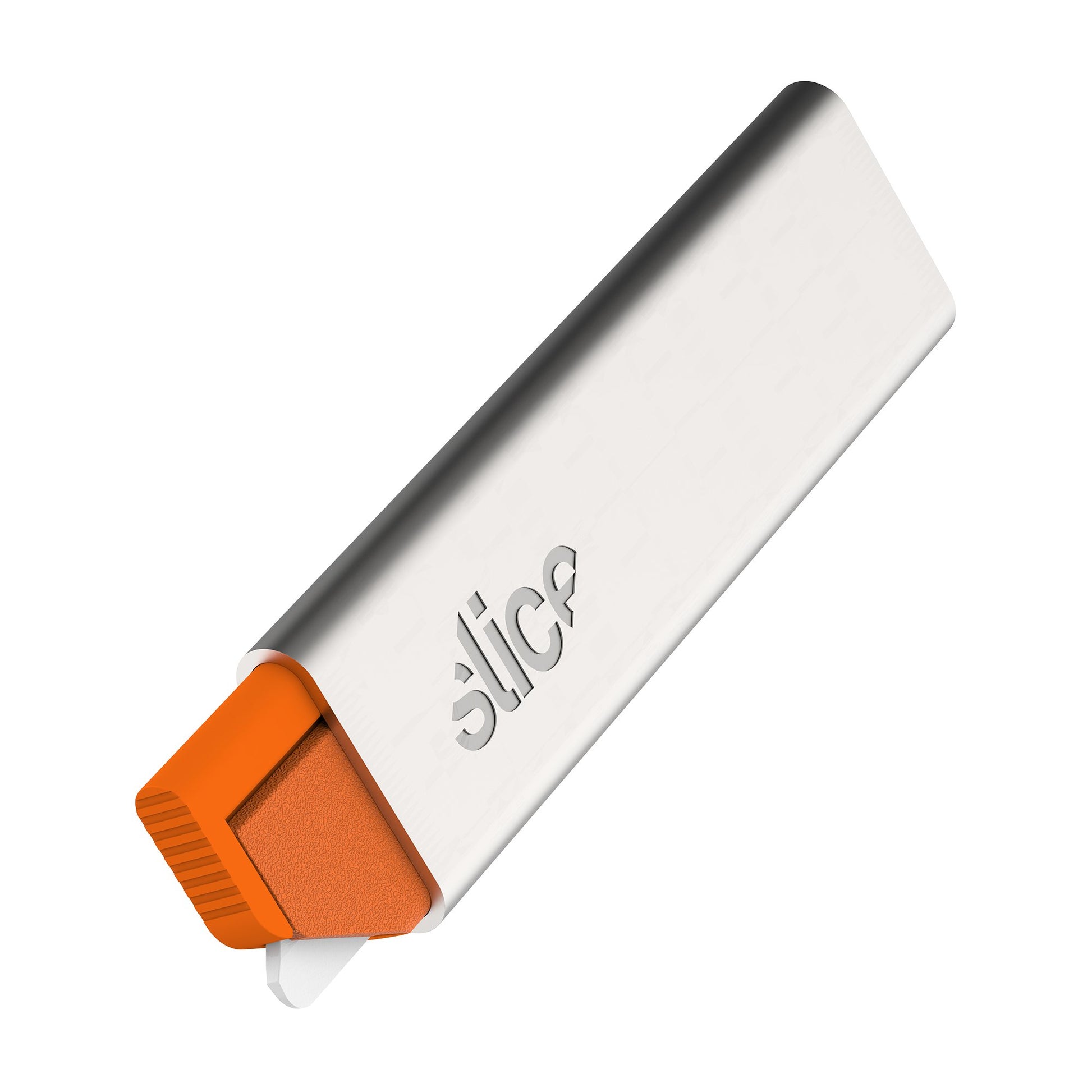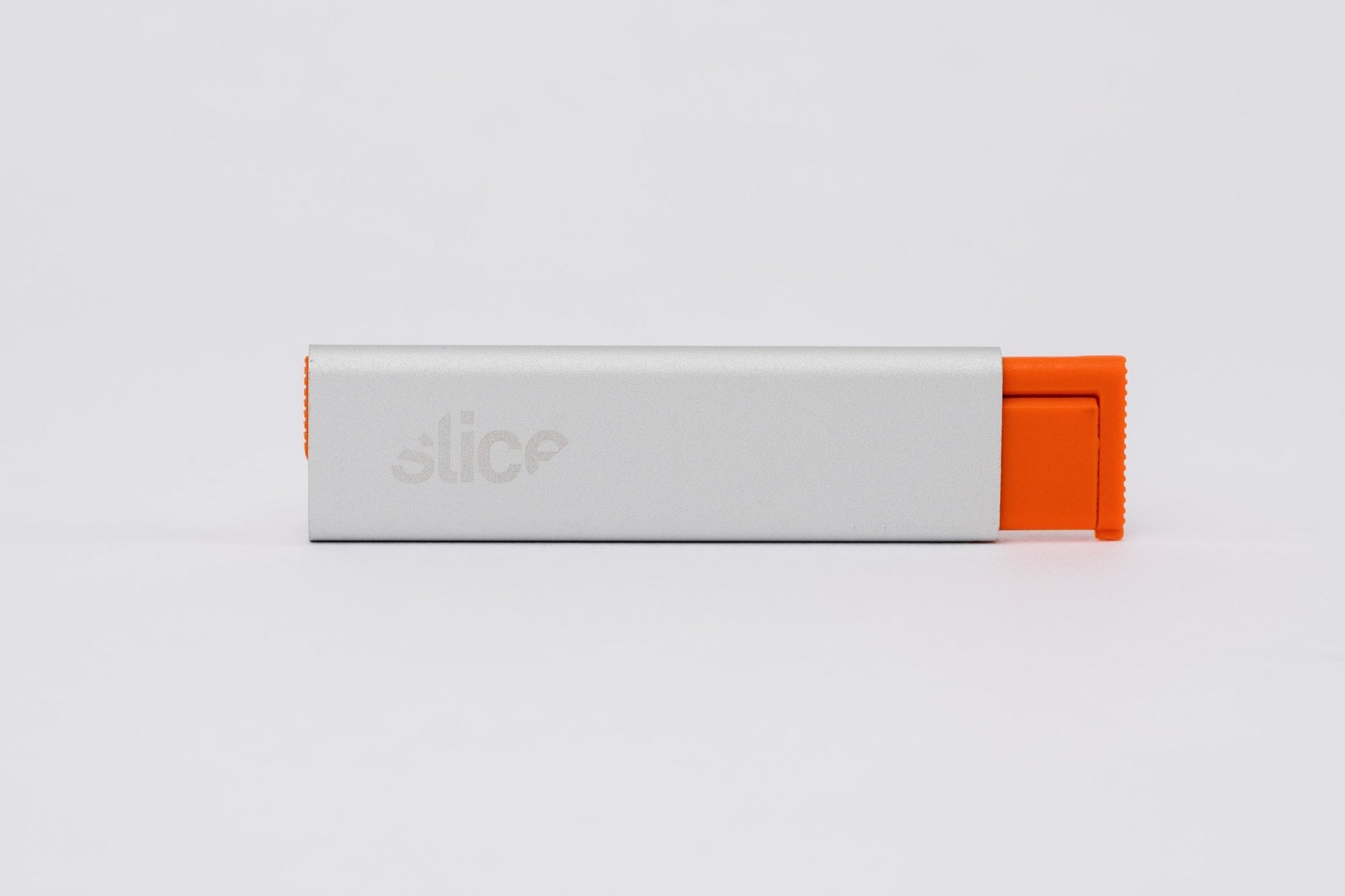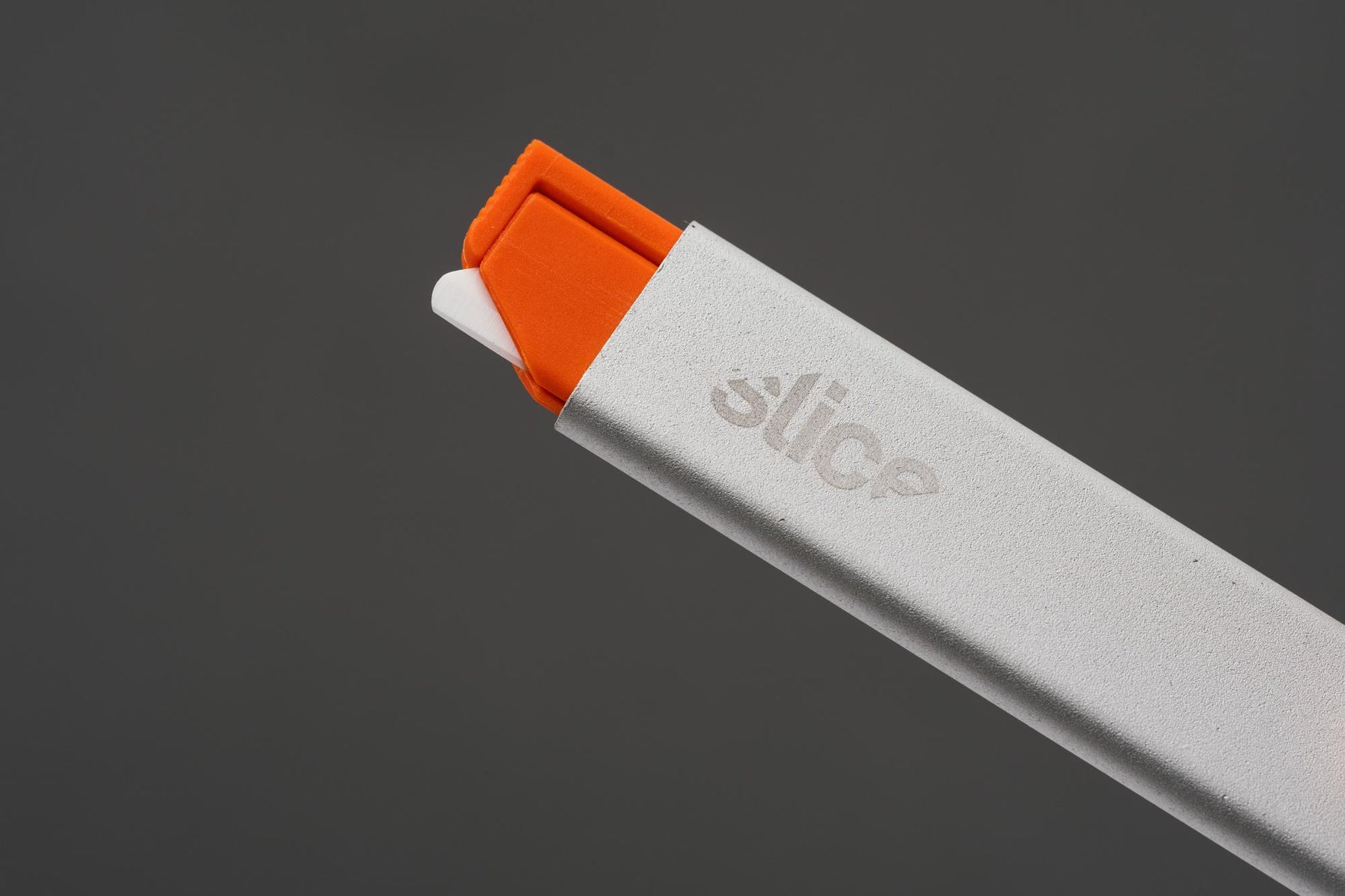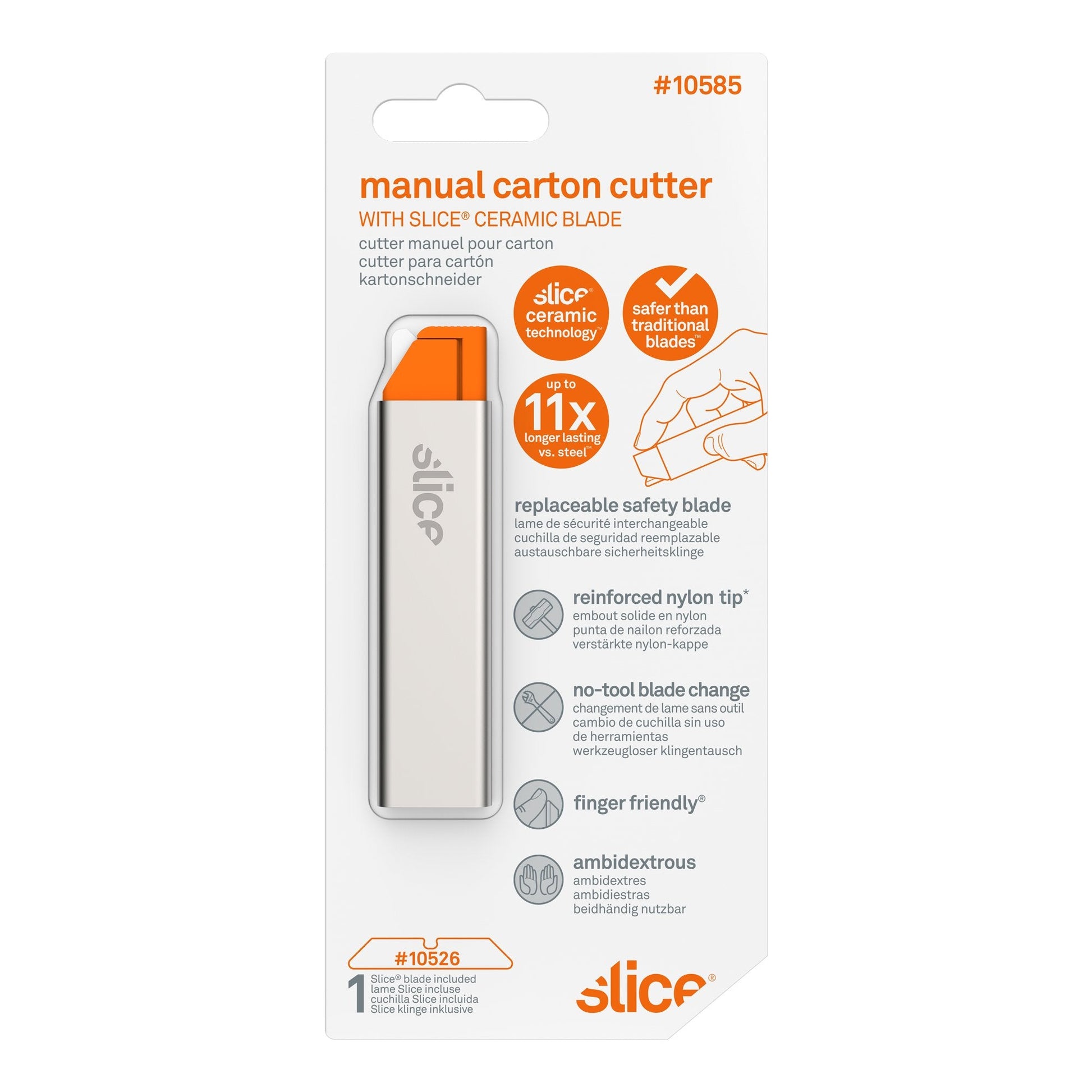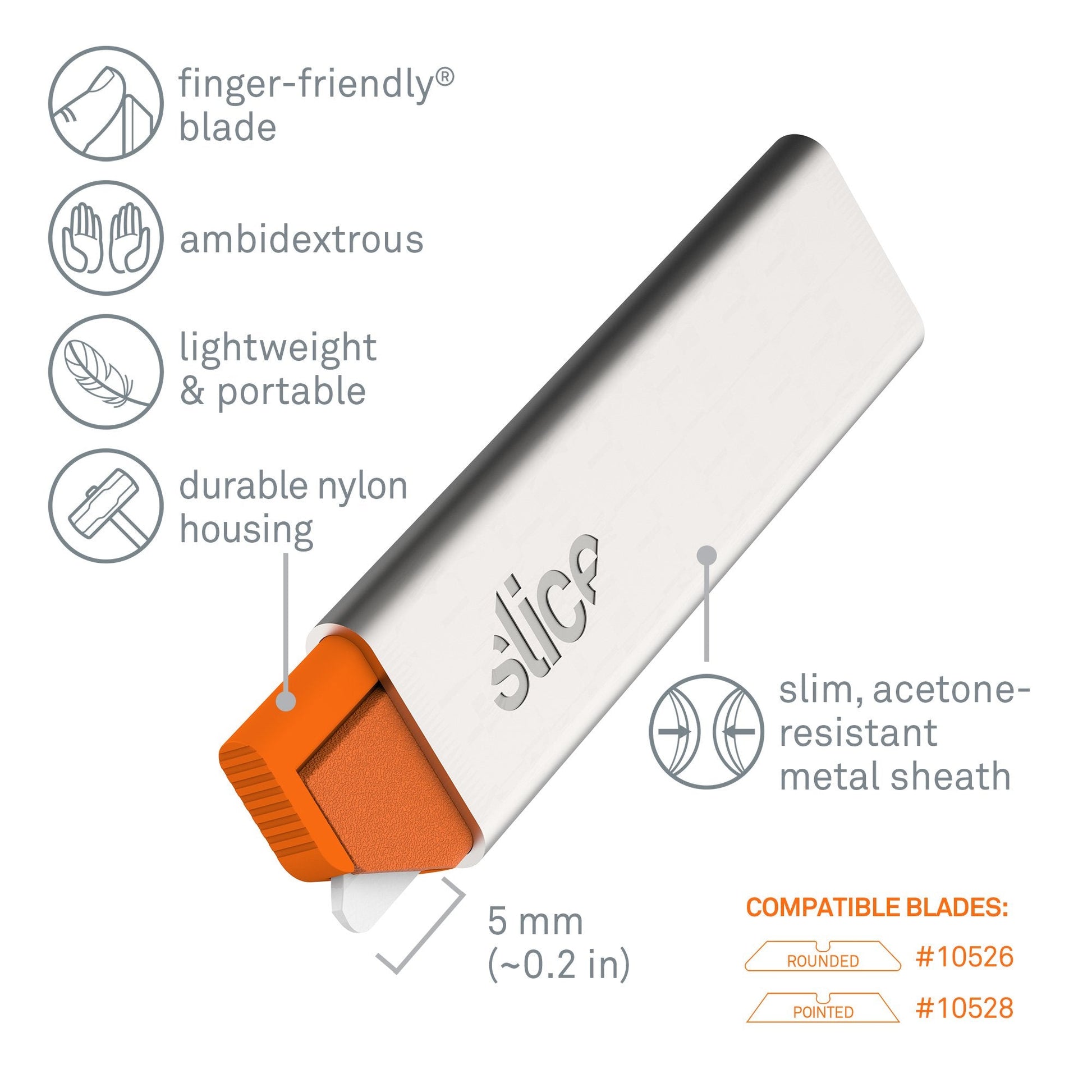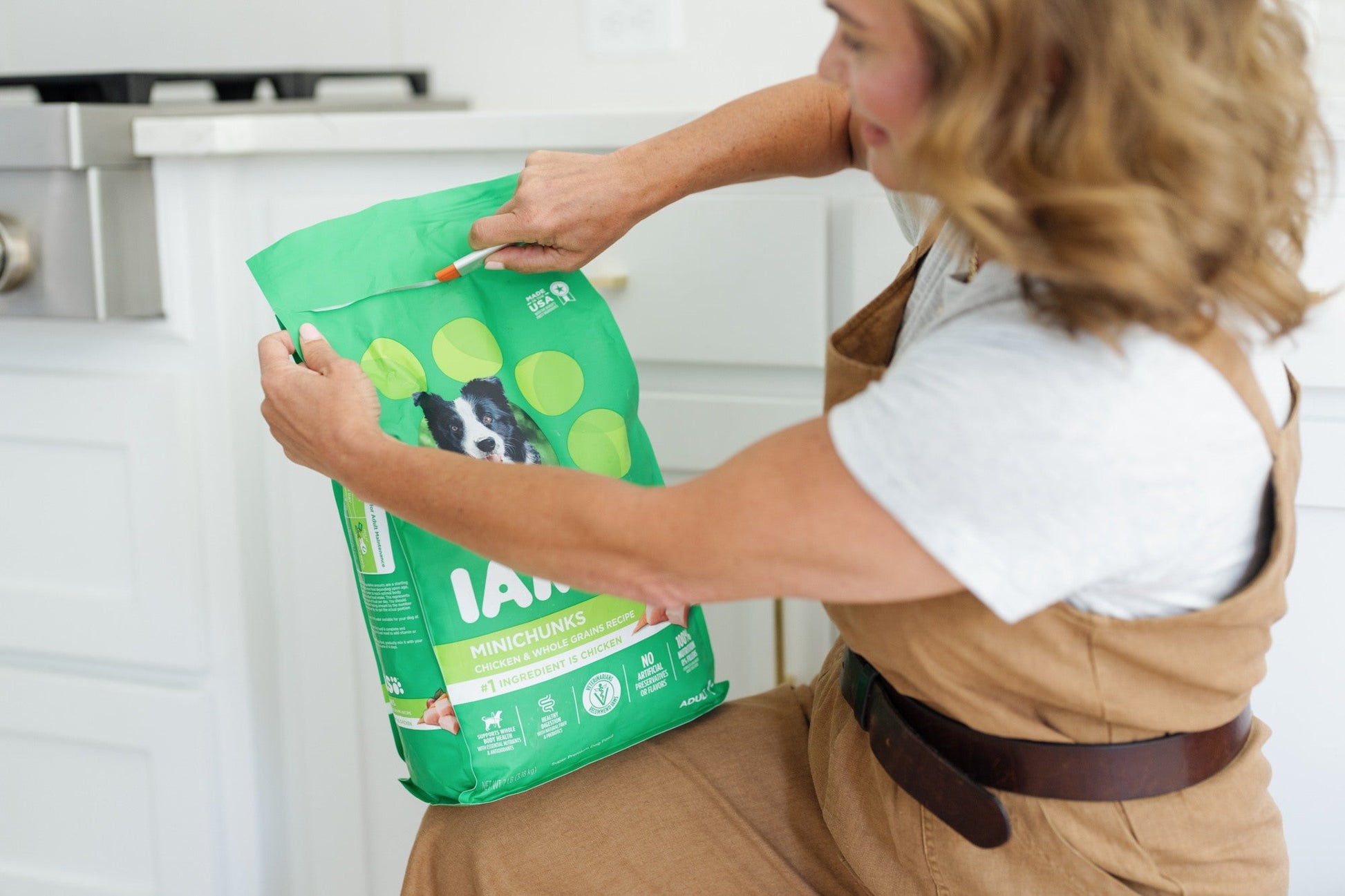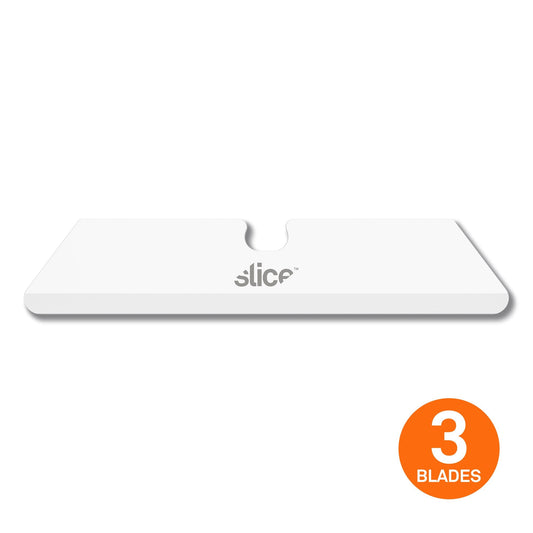SKU #10585
Manual Carton Cutter
Couldn't load pickup availability
Feeling overwhelmed by the amount of cardboard cutting needed to break down the boxes in your garage? Slice®’s Manual Carton Cutter is here to help, designed specifically to cut boxboard and thin corrugate.
Created with just enough blade exposure to easily cut through cardboard, you can use this tool daily without the fear of harming yourself or what’s inside your packaging. Slide the tool’s protective metal sheath to cover or uncover the blade. Its easy-to-use design comfortably fits in your hand and allows everyone, including those with dexterity challenges, to cut independently with ease.
From its daily use in offices cutting cardstock to helping your kids with their school projects, Slice makes people and places safer. Learn more below.
- Durable nylon handle with acetone-resistant metal sheath
- 100% zirconium oxide blade that never rusts
- Blade lasts on average 11.2x longer than metal blades
- Easy-to-use ambidextrous design
Great for:
- Cutting coupons from cereal boxes
- Opening packaging and shrink wrap
- Slicing cardstock
- Opening and breaking down boxes
Product Specifications
Product Specifications
Cutting Depth:
Material: GFN, aluminum, zirconium oxide
Dimensions: L x W x H
Weight: 0.032 kg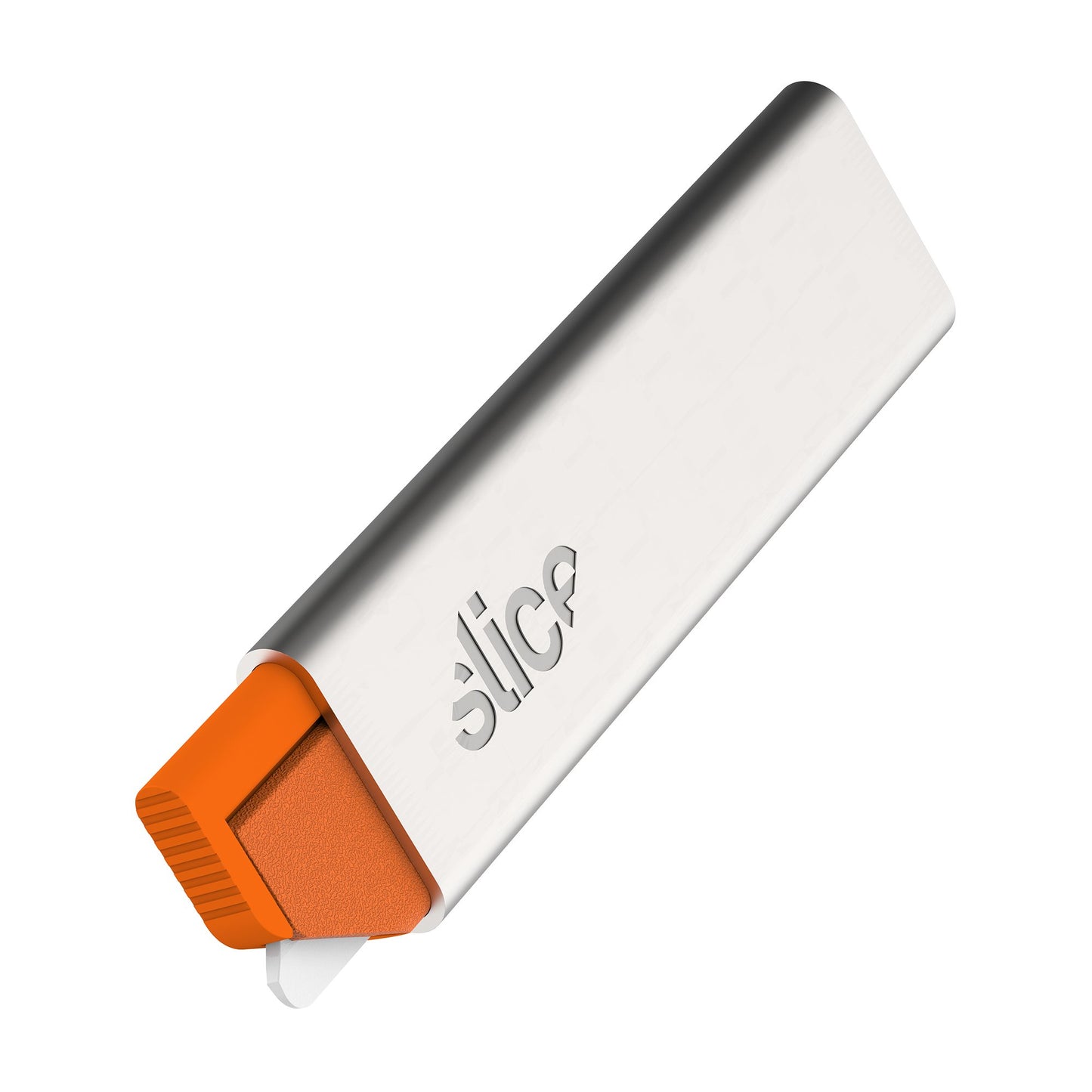
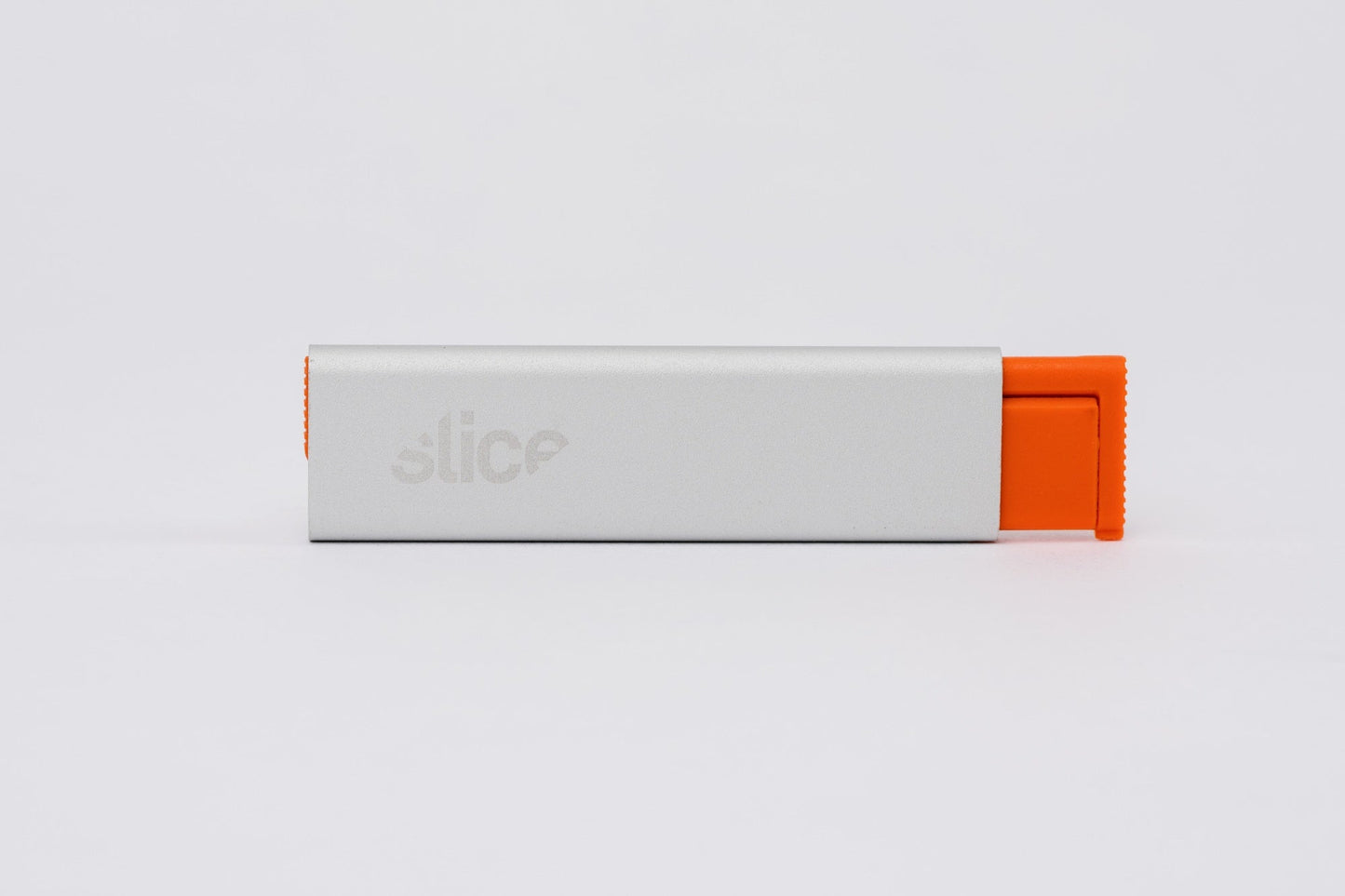
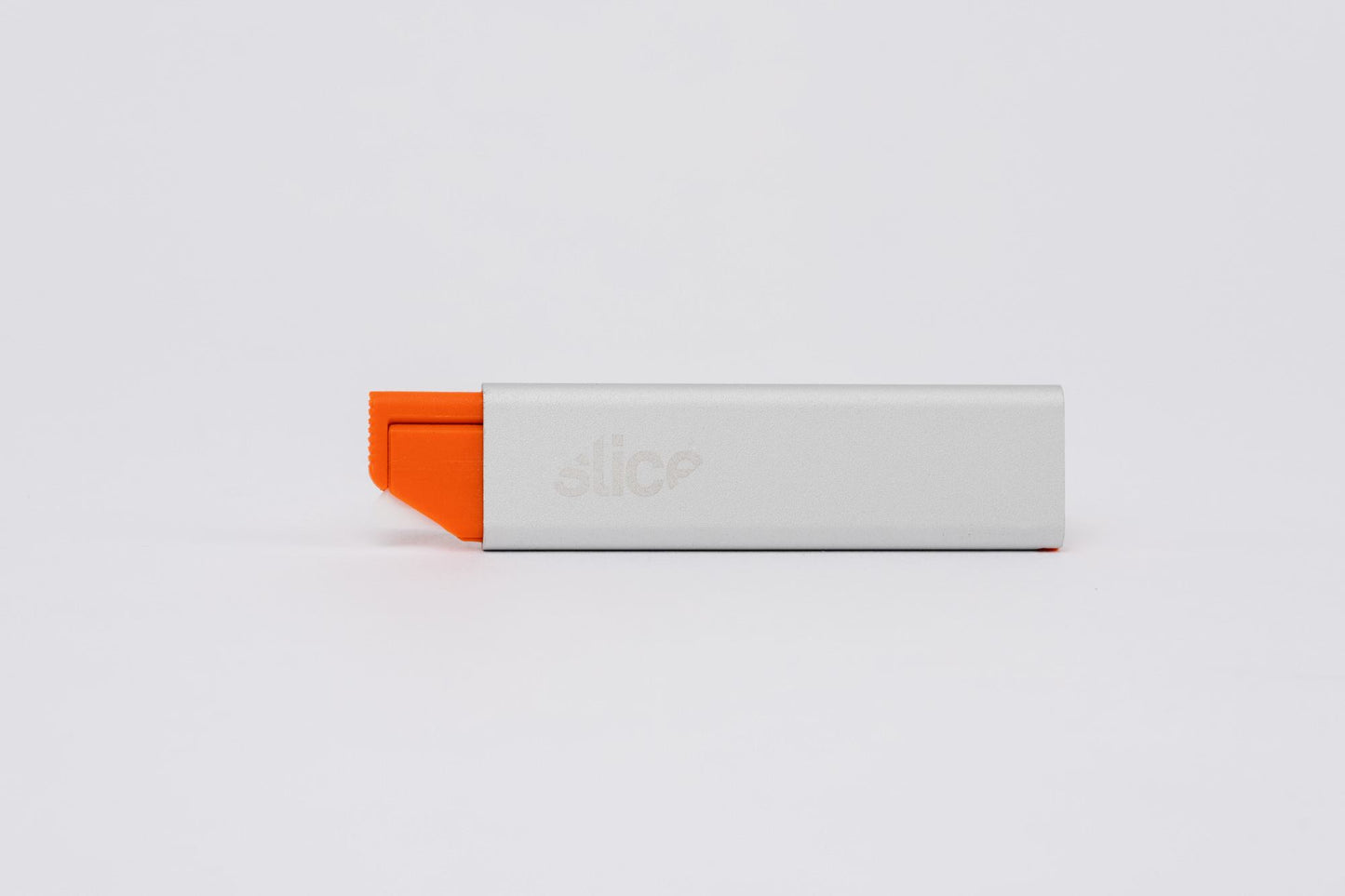
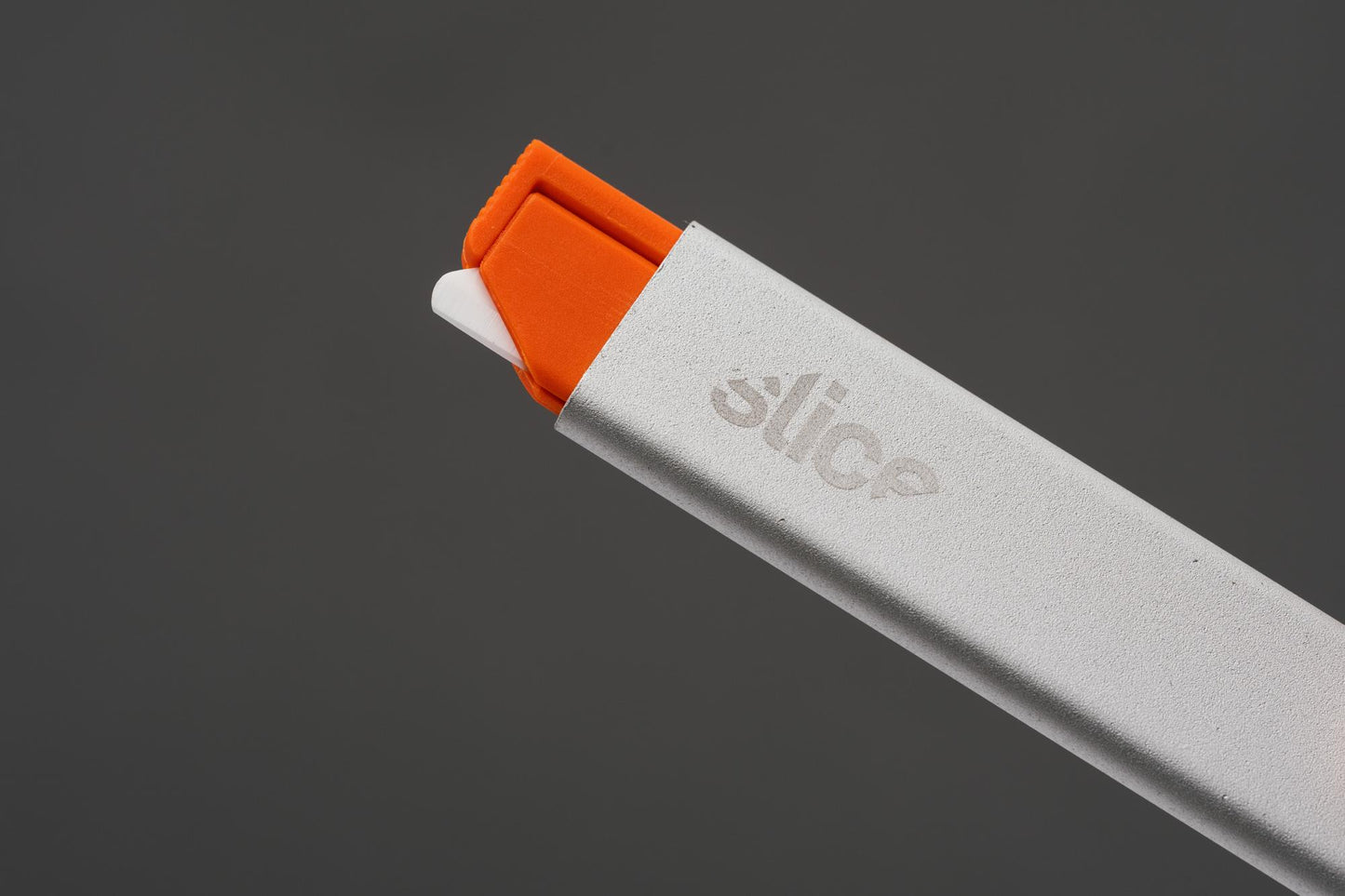
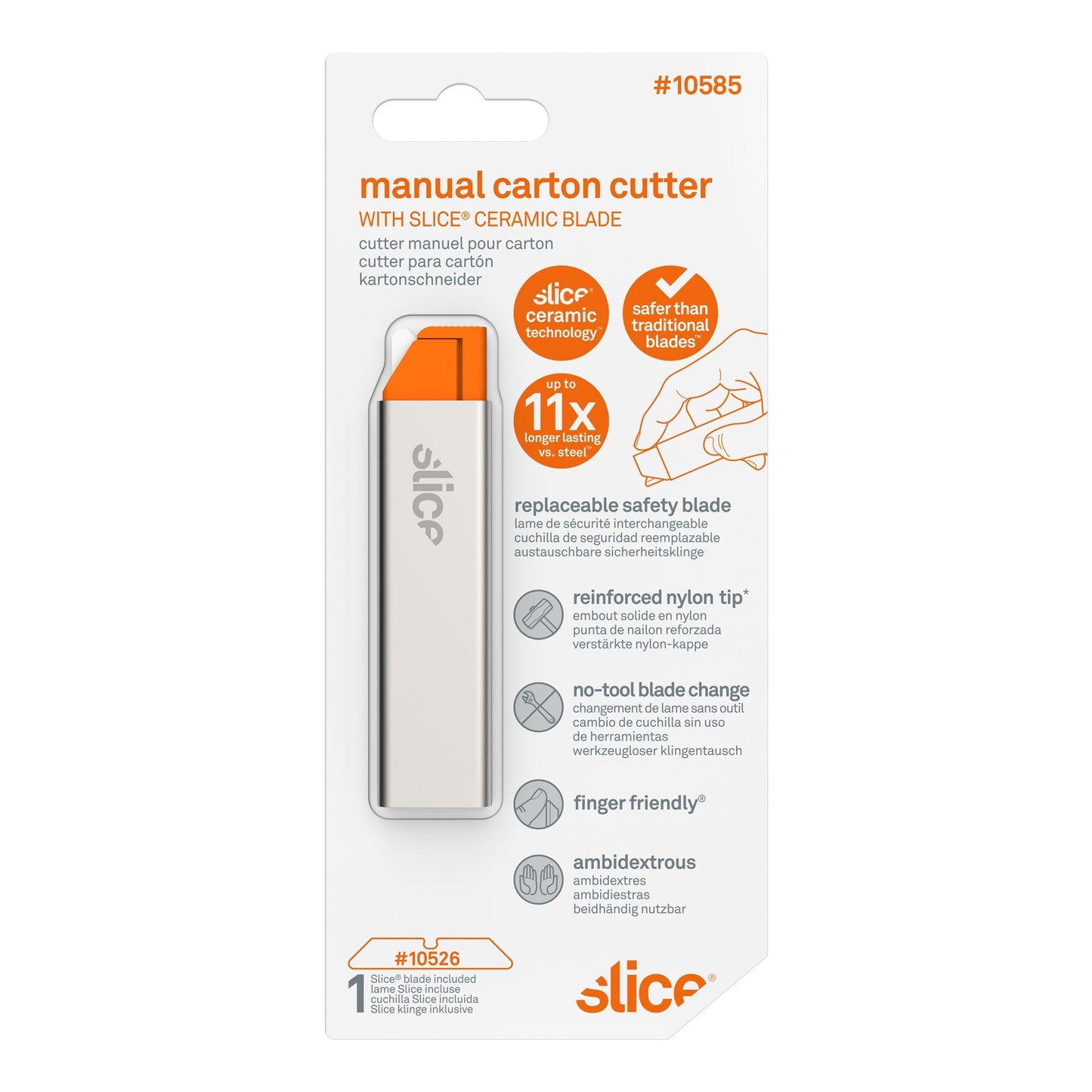

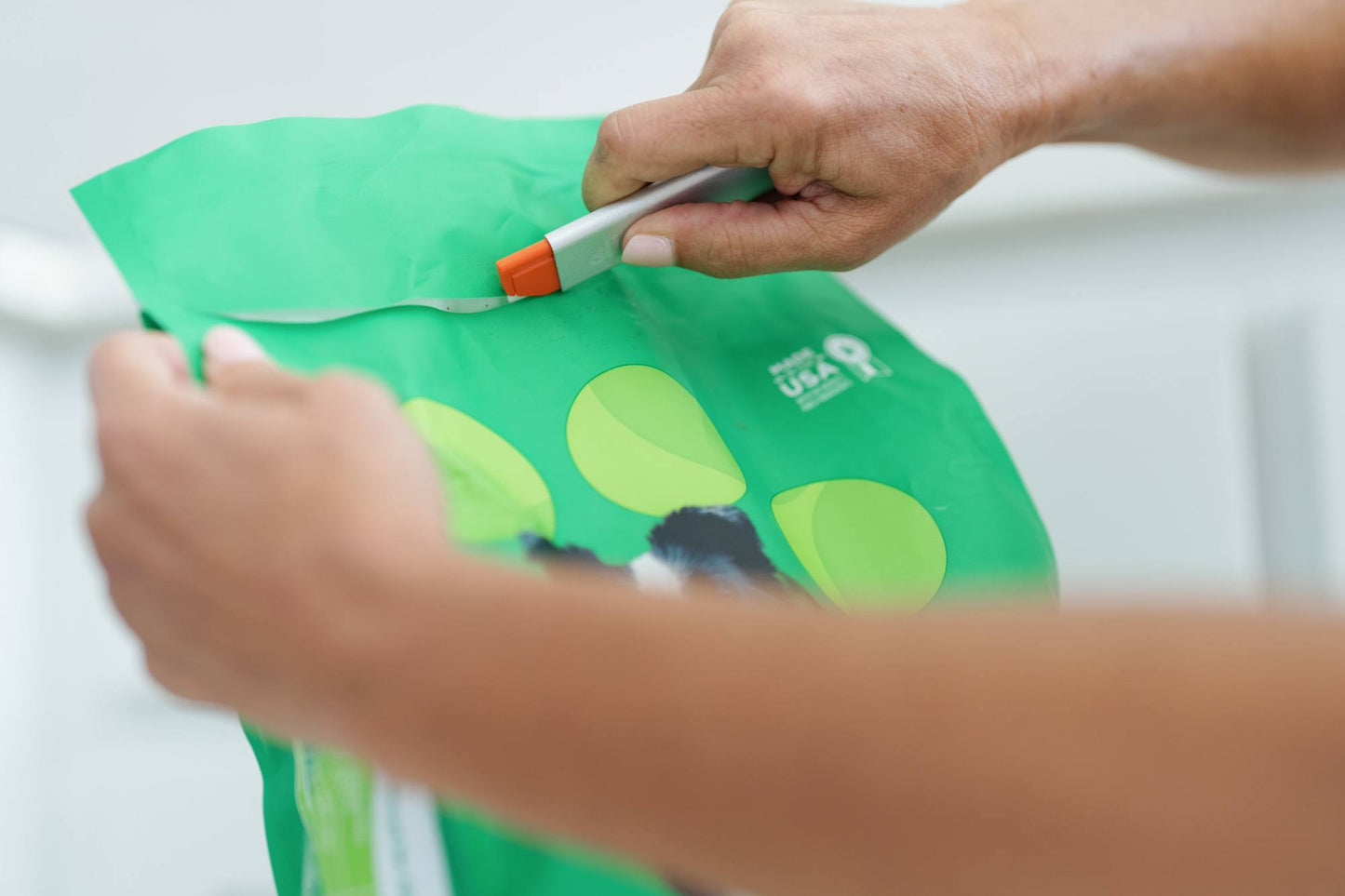
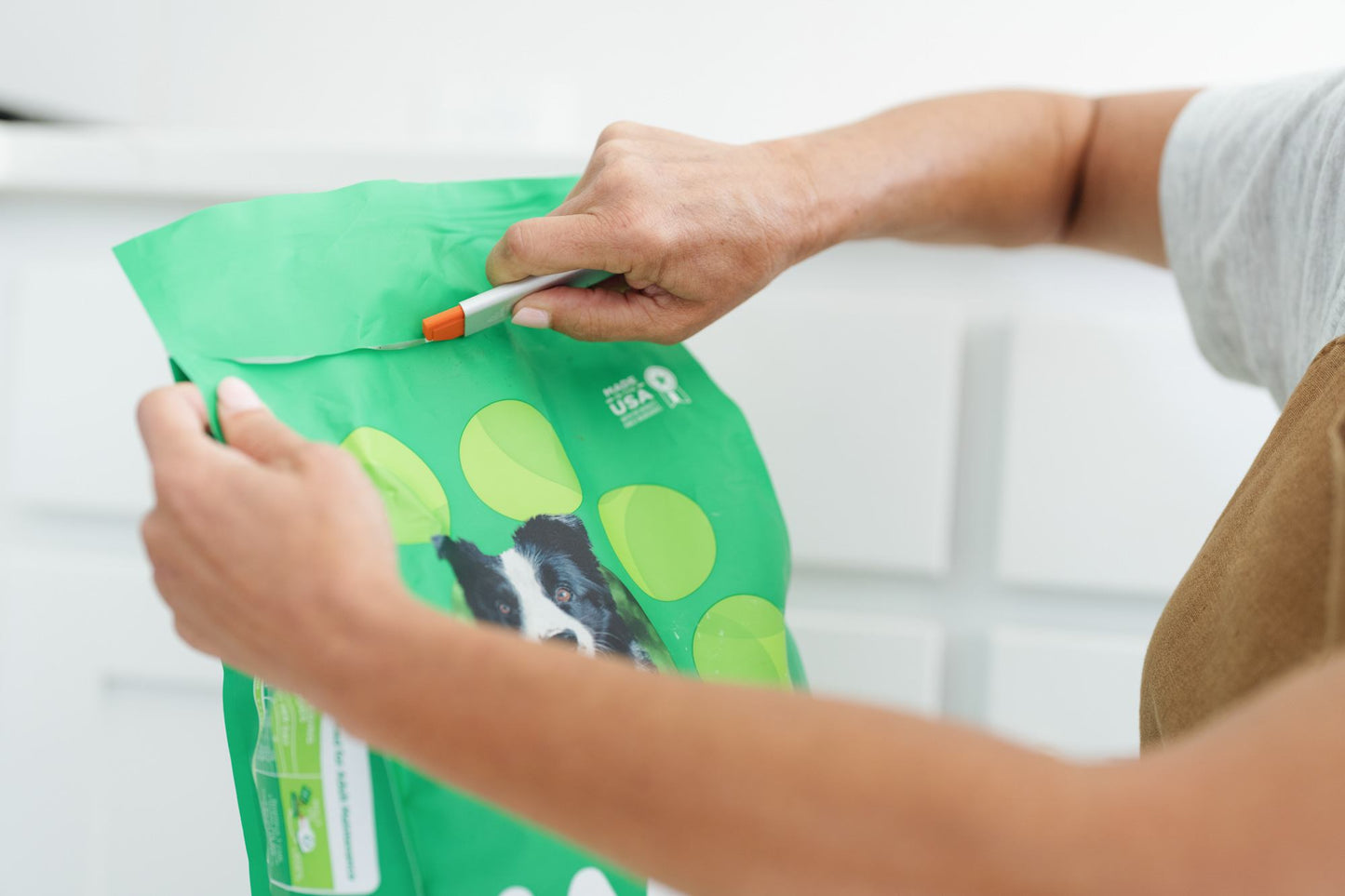

Compatible Products
-
Utility Knife Blades (Rounded Tip)
Regular price $40.68 AUDRegular priceUnit price per -
Utility Knife Blades (Pointed Tip)
Regular price $40.68 AUDRegular priceUnit price per
Videos
-
Replacing Carton Cutter Blades
FAQ
What Is a Carton Cutter?
>While many people use utility knives for this purpose and handle designs vary, carton knives typically have a thin, flat rectangular handle with a sheath that slides over the housing to expose or protect the blade. Many use standard metal utility blades while others use (dangerous) snap-off metal blades.These tools are frequently smaller than standard utility cutters and fit easily in the palm of your hand.
How Are Slice Carton Cutters Safer?
How Do I Change the Blade in the Slice Carton Cutter?
Ensure that the new blade lines up with the notch in the housing and close the housing. Before you slide the metal sheath back on, check for the notch on the bottom of the sheath. Line up the blade with this notch and slide the housing back in. This will ensure that the stopper on the housing lines up with the notch on the sheath, limiting how far down the sheath can slide.

